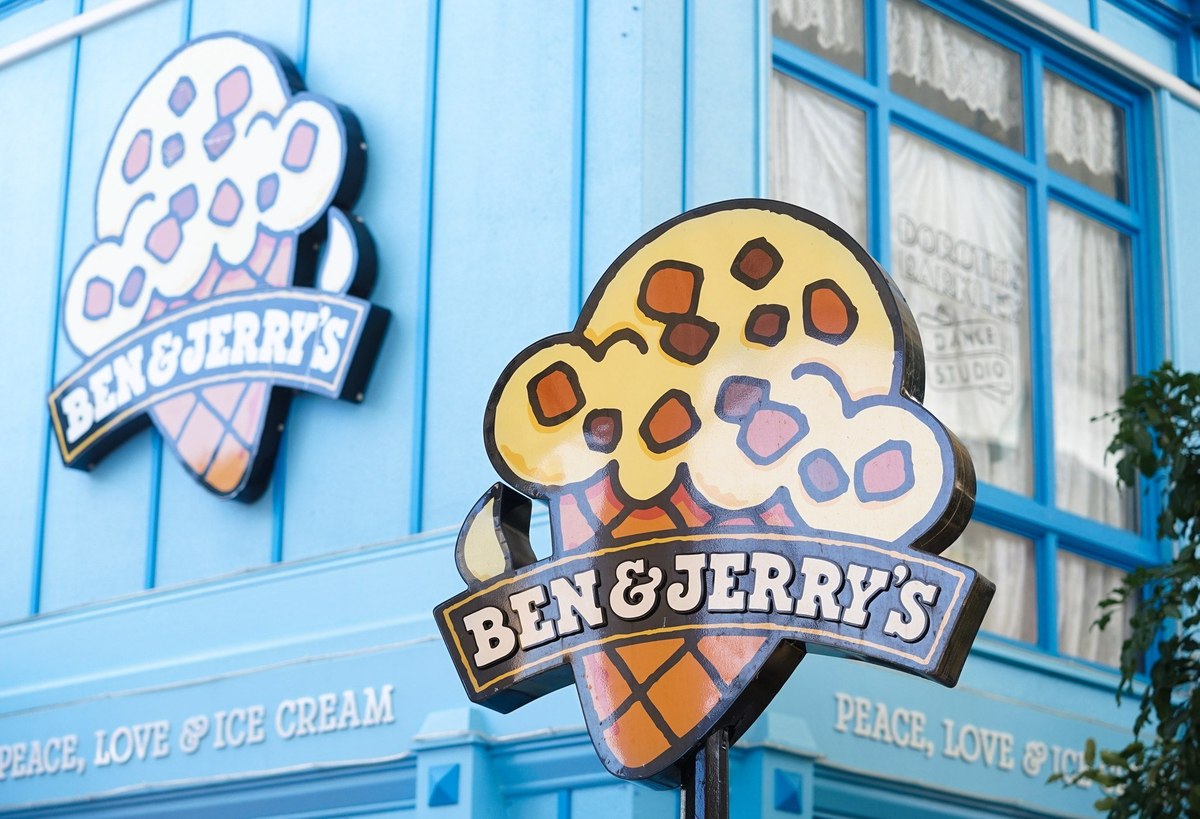Key findings:
- Ben & Jerry’s Index score declined to 24.8% as of October 5, marking its lowest point following a steady drop over the past month. This reflects a broader shift in brand health metrics following a high-profile leadership change.
- Buzz score decreased from 11.6 on September 17 to 6.7 on October 5, reflecting increased negative attention around the brand.
- Purchase Intent dipped by only one point, indicating continued consumer willingness to buy despite recent news.
- 63% of Ben & Jerry’s customers support brands expressing views on social issues, compared to 57% of the general population; 54% favor brand engagement with social causes, versus 42% nationally.
Ben & Jerry’s co-founder Jerry Greenfield recently stepped down after a disagreement with parent company Unilever over corporate social activism. This has prompted renewed discussion about the role of activism in corporate branding. Using data from YouGov BrandIndex — a syndicated brand tracker that continuously collects data on thousands of brands daily — we examine how consumer perceptions of Ben & Jerry’s are evolving across key metrics. Additionally, YouGov Profiles data provides insights into how the brand’s current customers view corporate involvement in social causes, and how these views compare to the broader American public.
Ben & Jerry’s had remained a steady performer in terms of overall brand health until the executive transition announcement on September 17. The brand’s Index score — which averages key measures including Impression, Value, Reputation, Satisfaction, Quality, and Recommend — has been in slow decline over the past month. As of October 5, the score stands at 24.8 points, marking its lowest point of the year. This metric provides a comprehensive measure of a brand’s standing and reputation among consumers.
Buzz and WOM Exposure scores suggest growing public attention
Buzz scores, which reflect whether consumers have recently heard something positive or negative about a brand, show a notable downward shift. Ben & Jerry’s score dropped from 11.6 on September 17, the day the news became public, to 6.7 by October 5. The trend indicates that the brand is receiving more negative media exposure in recent weeks.
At the same time, Word of Mouth (WOM) Exposure scores — based on whether people have discussed the brand with friends or family in the past two weeks — have increased. More people are talking about Ben & Jerry’s, suggesting that the brand is currently at the center of public conversation and cultural debate.
Purchase intent remains largely unchanged
Since the announcement of Greenfield’s departure, the metric has declined by only one point, indicating that consumers are still just as likely to purchase Ben & Jerry’s products.
Current Customers show greater acceptance of brand activism
Data from YouGov Profiles shows that Ben & Jerry’s current customers are generally more supportive of brand activism than the average American. Among this group, 63% agree that companies should be able to express opinions on social or political issues, compared to 57% of the general public.
Support also extends to direct brand involvement in social causes. Over half of Ben & Jerry’s customers (54%) say they like brands that engage with social issues, whereas 42% of Americans overall say the same.
When it comes to moral messaging, 66% of the brand’s customers say they appreciate companies that promote a moral stance. This figure is ten percentage points higher than the national average of 56%. While the difference is notable, the broader public also shows openness to value-based messaging.
Despite strong support for activism, not all Ben & Jerry’s customers believe brands are sincere in their efforts. When asked whether companies that speak out on social or political issues are simply trying to exploit them, 46% of Ben & Jerry’s customers definitely agree or tend to agree. This is slightly below the national average of 50%. However, a larger share of Ben & Jerry’s customers (30%) disagree with the statement, compared to 23% of the general public.
As Ben & Jerry’s navigates this transitional period, early indicators point to a mixed consumer response. While the long-term impact remains to be seen, these early findings suggest that the minimal change in purchase intent, combined with strong views of its core customer base, may offer some support as the brand looks ahead.
Methodology: YouGov BrandIndex collects data on thousands of brands every day. A brand’s Index score is an overall measure of brand health, made up of General Impression, Customer Satisfaction, Quality, Value, Corporate Reputation and Recommendation and delivered as a net score. Its Purchase Intent score is based on the question: From which of these would you be most likely to purchase packaged goods? Scores are reported based on daily surveys of US adults. Data is weighted using a propensity scoring methodology with targets from the American Community Survey (ACS) to ensure representation by age, gender, race, education, and region. Figures are shown as a 4-week moving average with sample size ranging from 1,800 to 1,900 between September 1 and October 5, 2025.
YouGov Profiles is based on continuously collected data through rolling surveys, rather than a single limited questionnaire. Figures are drawn from responses collected between September 2024 and September 2025, using a 52-week dataset updated weekly. Data is nationally representative of adults (18+) in the US and weighted by age, gender, education, region, and race.
Image: Getty Images
